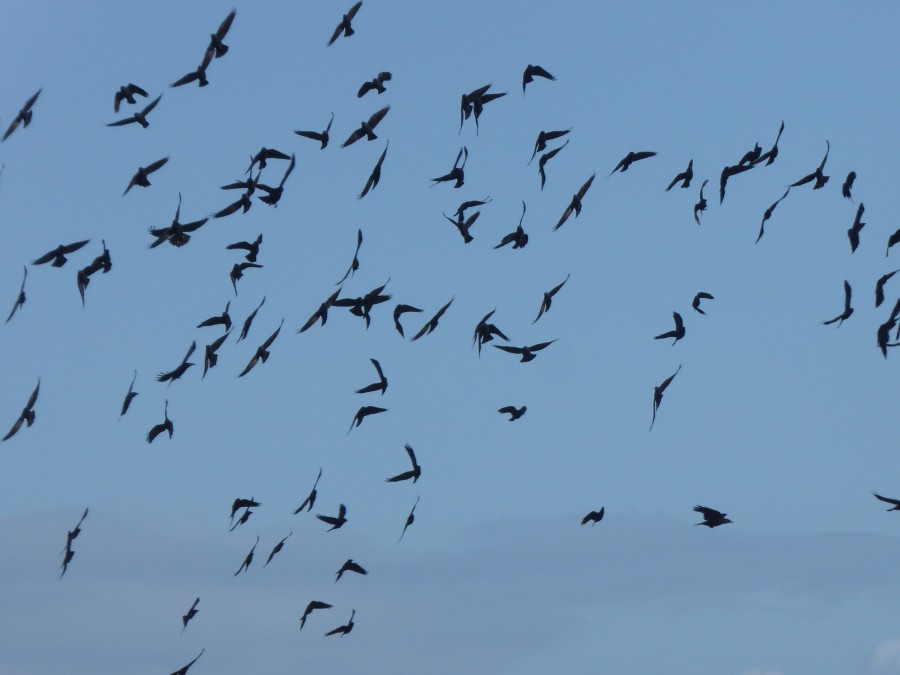Wild winds accompany me this morning along the ride. The air is clear and crisp and the horizons are sharp in the bright autumn sunshine. The height of autumn is now upon us and each passing day sees the trees shed another layer of clothing. As my feet kick up the carpet of leaves, I look over the adjacent farmland where the last of the harvest has left the fields stubbled and brown. Here I can see a hundred or more dark shapes energetically pecking at the earth. They are rooks, one of my favourite flocks of autumn and winter.
Rooks belong to the corvid family that includes, jackdaws, crows, magpies, jays, choughs and ravens. They are large birds that have a distinctive bare, grey patch at the base of their bills and shaggy thigh feathers that look like baggy shorts. Although rooks first appear as black, they are in fact the most beautiful oily, iridescent purple, bronze and green.
Being perceived as similar in nature, rooks and crows are often used interchangeably in literature and folklore. For example, Macbeth warns of nightfall when the “crow makes wing to the rooky wood”, and the saying “as the crow flies” derives from the rooks’ long and direct flight to their rookery. In contrast to rooks, crows have a solitary or paired existence, hence the country adage that “a crow in a crowd is a rook and a rook on its own is a crow”.
The raucous, complex social communities of rooks has given rise to the many collective nouns for them such as a ‘parliament’, a ‘storytelling’, a ‘building’ or a ‘clamour’; the former being their tendency to hold court and chastise the wrongdoers in their rookery for stealing twigs from their neighbours.
Today, however, in this blustery wind, it is their aerial displays that captivate me. I can’t think of any other land bird that plays in the wind the way that rooks do. Twisting and tumbling with their lifelong partners towards the ground, then scooping skywards at breakneck speed. After their airborne antics they return to the bare fields to feast on the invertebrates. Until that is, one takes to the air again and suddenly they are all up and the sky is momentarily punctuated with noisy black silhouettes, chortling and jostling for position. As I leave them to their business, I ponder how easy it is to take familiar birds for granted; that is until you consider how empty our countryside would be without them.
